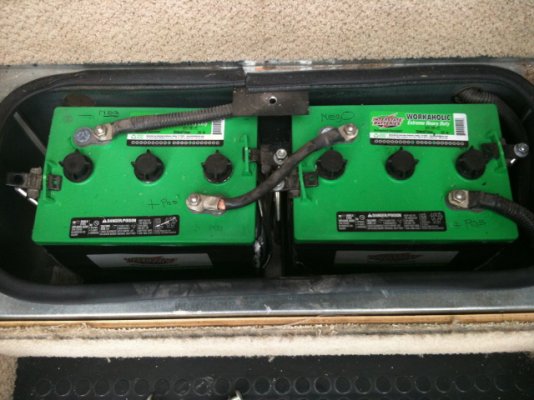jeverden
Well-known member
I just replaced all 3 batteries in my folks 2004 Fleetwood Southwind 36B
In addition to the 2 house batteries I replaced exactly as the old ones were configured, I also replaced
a blown chasis battery. Hooked everything back up and plugged in the unit to charge the house batteries.
Not 5 minutes later the chasis battery started bubbling over and dripping the water down under.
When I hit the disconect button it stopped.
Any suggestions on what is causing this??
Jason
In addition to the 2 house batteries I replaced exactly as the old ones were configured, I also replaced
a blown chasis battery. Hooked everything back up and plugged in the unit to charge the house batteries.
Not 5 minutes later the chasis battery started bubbling over and dripping the water down under.
When I hit the disconect button it stopped.
Any suggestions on what is causing this??
Jason

